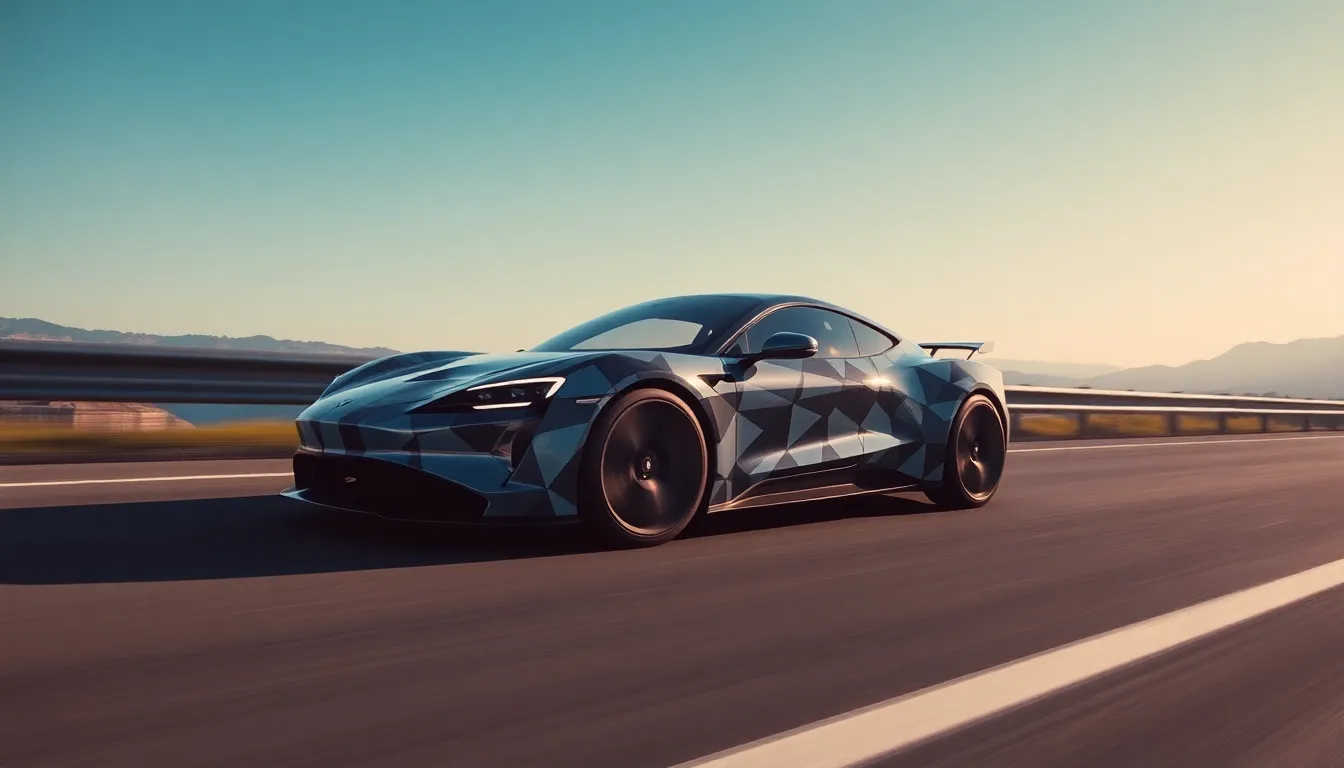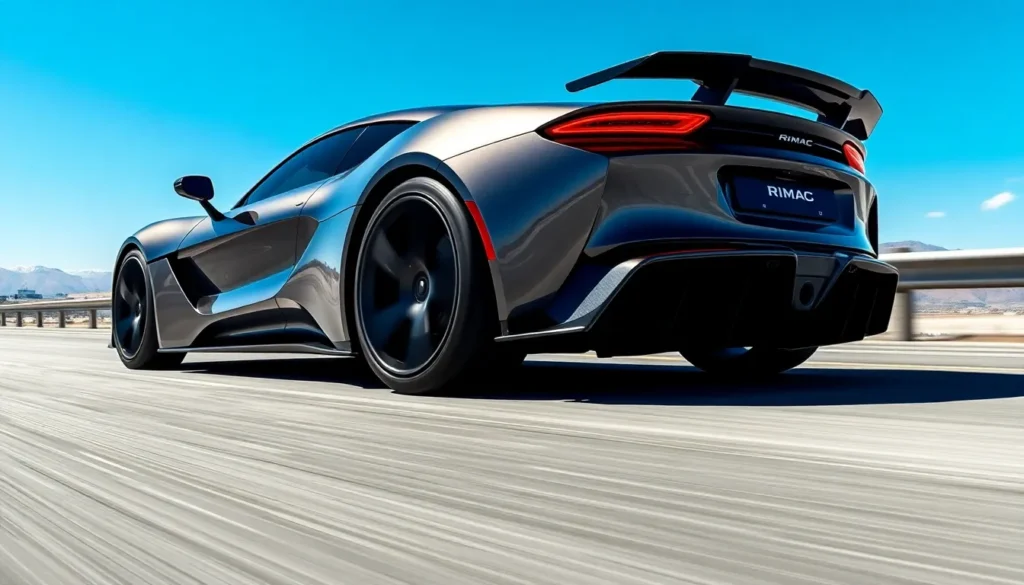In a world where speed meets sustainability, electric vehicles are revving up like never before. Forget the gas-guzzlers of yesteryear; today’s fastest electric vehicles are here to show that eco-friendly can also mean adrenaline-pumping. Imagine cruising down the highway, not just with zero emissions but also with the kind of acceleration that would make even a cheetah envious.
Table of Contents
ToggleOverview of Fastest Electric Vehicles
Electric vehicles (EVs) rapidly gained attention for their impressive speed and performance. Several models stand out in the race for the title of the fastest. For instance, the Rimac C_Two achieves an astonishing 0 to 60 mph in just 1.85 seconds, making it one of the quickest on the market.
Another contender is the Tesla Model S Plaid, which offers a 0 to 60 mph time of 1.99 seconds. Its dual electric motors provide exceptional torque and performance, showcasing Tesla’s commitment to innovation. The Lucid Air Dream Edition follows closely, boasting a 0 to 60 mph time of 2.5 seconds, combining luxury with breathtaking speed.
The Porsche Taycan Turbo S also enters the conversation, reaching 0 to 60 mph in 2.4 seconds. This model combines electric power with Porsche’s signature handling and driving dynamics.
Additionally, the Nio EP9, despite being slightly older, remains a strong player with a recorded 0 to 60 mph time of 2.7 seconds. Its aerodynamic design and advanced electric technology contribute to its performance.
These EVs illustrate the transformation of the automotive landscape. With rapid advancements in battery technology and design, manufacturers continuously push the boundaries of speed, drawing attention from enthusiasts and environmentally conscious drivers alike. The future of performance automobiles lies in the electrification of speed, promising thrilling experiences without compromising sustainability.
Key Features of Fast Electric Vehicles

Fast electric vehicles (EVs) exhibit remarkable features that captivate performance enthusiasts and eco-conscious drivers alike. Notable elements include acceleration performance and battery technology, which elevate driving experiences.
Acceleration Performance
Acceleration performance defines fast electric vehicles. For instance, models like the Rimac C_Two reach 0 to 60 mph in 1.85 seconds, displaying extraordinary speed. Comparatively, the Tesla Model S Plaid achieves this feat in 1.99 seconds. Quick acceleration comes from instant torque that electric powertrains provide. Many manufacturers prioritize lightweight designs and aerodynamic shapes to enhance performance further. Vehicles like the Porsche Taycan Turbo S and Lucid Air Dream Edition also demonstrate impressive stats, clocking in at 2.4 and 2.5 seconds respectively. This focus on speed reshapes expectations for how swiftly EVs can perform on the road.
Battery Technology
Battery technology plays a crucial role in the capabilities of fast electric vehicles. Advanced battery systems significantly impact performance and range. For example, manufacturers develop high-density lithium-ion batteries that improve energy storage. Innovations in solid-state batteries further enhance efficiency while reducing recharge times. Faster charging infrastructure complements this technology, allowing drivers to quickly power up at charging stations. Companies like Tesla and Lucid prioritize battery performance, resulting in rapid acceleration combined with long-range capabilities. As battery technology continues to evolve, so does the potential for even faster electric vehicles, pushing the boundaries of what’s achievable in automotive engineering.
Top Fastest Electric Vehicles of 2023
The electric vehicle market features incredible speed and cutting-edge technology. Here are some of the top contenders for 2023.
Vehicle 1: Rimac C_Two Specifications and Features
Rimac C_Two showcases astonishing acceleration, achieving 0 to 60 mph in just 1.85 seconds. This hypercar utilizes a four-motor all-wheel-drive system, generating a staggering 1,914 horsepower. Key features include advanced torque vectoring, enhancing traction and control. A high-capacity battery offers a range of approximately 340 miles on a single charge. Additionally, the C_Two incorporates AI-driven features for improved driving dynamics, solidifying its position as a leader in performance engineering.
Vehicle 2: Tesla Model S Plaid Specifications and Features
Tesla Model S Plaid captures attention with a remarkable 0 to 60 mph time of just 1.99 seconds. This model boasts three electric motors, providing an astounding 1,020 horsepower. Long-range capabilities stand out, with an EPA-rated range of up to 405 miles. Unique features include a large touchscreen interface for interactive controls and over-the-air software updates, allowing for continuous performance enhancements. High-speed charging capabilities enable the vehicle to regain substantial range quickly.
Vehicle 3: Lucid Air Dream Edition Specifications and Features
Lucid Air Dream Edition accelerates from 0 to 60 mph in an impressive 2.5 seconds. This luxury sedan offers a dual-motor setup, producing 1,111 horsepower. A standout feature includes an estimated range of 503 miles, making it one of the longest-range EVs available. Cutting-edge technology, such as an innovative 34-inch curved Glass Cockpit 5K display, enhances user experience. Advanced driver-assistance systems promote safer driving while providing exceptional performance.
Comparison of Fast Electric Vehicles
Speed and technology define the fastest electric vehicles on the market. The Rimac C_Two leads the pack with an astounding 0 to 60 mph acceleration in just 1.85 seconds, showcasing its four-motor all-wheel-drive system that delivers 1,914 horsepower. Tesla’s Model S Plaid follows closely, achieving the same sprint in 1.99 seconds, boasting three electric motors and a long-range capability of up to 405 miles.
Noteworthy models include the Lucid Air Dream Edition, which accelerates from 0 to 60 mph in 2.5 seconds, powered by a dual-motor system generating 1,111 horsepower. This vehicle also features an impressive range of 503 miles, making it an attractive option for those seeking speed and sustainability. Porsche’s Taycan Turbo S offers a strong performance as well, reaching 0 to 60 mph in 2.4 seconds, driven by its dual-motor setup that enhances driving dynamics and efficiency.
Nio’s EP9 completes the list, accelerating in 2.7 seconds. Its design emphasizes not just speed but also advanced technology, making it a significant player in the fast electric vehicle market. The competition among these vehicles highlights how innovative engineering and battery advancements allow manufacturers to push performance boundaries, catering to eco-conscious enthusiasts.
Performance specifications illustrate a clear trend: rapid acceleration and extended range are paramount for modern electric vehicles. As technology advances, options in sleek designs, powerful electric motors, and stamina continue to expand, providing consumers with thrilling choices that maintain a commitment to sustainability.
The rapid evolution of electric vehicles is reshaping the automotive industry. With remarkable acceleration and zero emissions these vehicles offer an exhilarating driving experience while prioritizing sustainability. The impressive performance of models like the Rimac C_Two and Tesla Model S Plaid showcases the potential of electric powertrains.
As battery technology continues to advance and charging infrastructure improves the future of fast electric vehicles looks promising. Enthusiasts and eco-conscious drivers alike can look forward to a new era of innovation that combines speed with environmental responsibility. The journey toward faster and more efficient electric vehicles is just beginning, and it promises to deliver thrilling rides for years to come.






